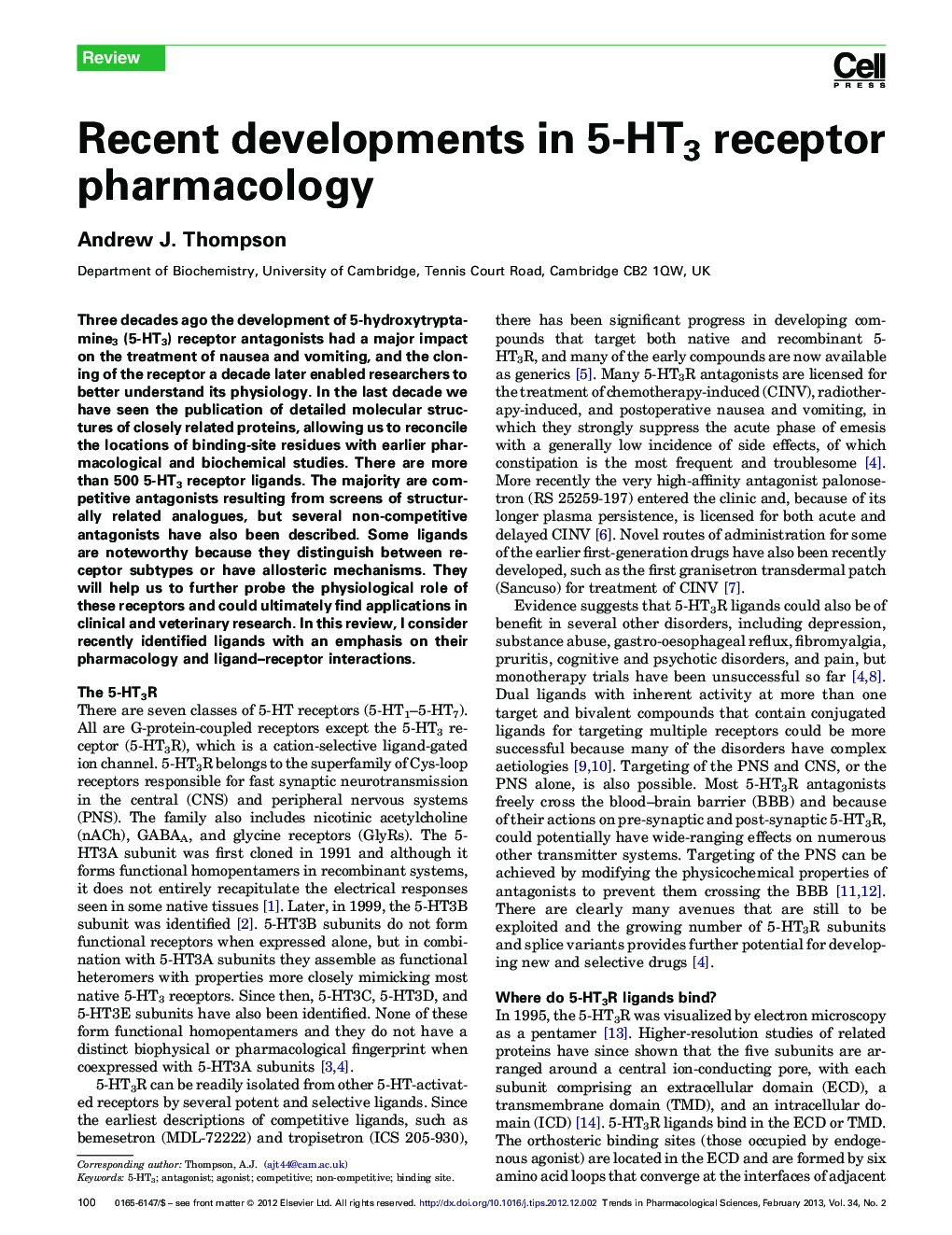| Article ID | Journal | Published Year | Pages | File Type |
|---|---|---|---|---|
| 2572775 | Trends in Pharmacological Sciences | 2013 | 10 Pages |
Three decades ago the development of 5-hydroxytryptamine3 (5-HT3) receptor antagonists had a major impact on the treatment of nausea and vomiting, and the cloning of the receptor a decade later enabled researchers to better understand its physiology. In the last decade we have seen the publication of detailed molecular structures of closely related proteins, allowing us to reconcile the locations of binding-site residues with earlier pharmacological and biochemical studies. There are more than 500 5-HT3 receptor ligands. The majority are competitive antagonists resulting from screens of structurally related analogues, but several non-competitive antagonists have also been described. Some ligands are noteworthy because they distinguish between receptor subtypes or have allosteric mechanisms. They will help us to further probe the physiological role of these receptors and could ultimately find applications in clinical and veterinary research. In this review, I consider recently identified ligands with an emphasis on their pharmacology and ligand–receptor interactions.
